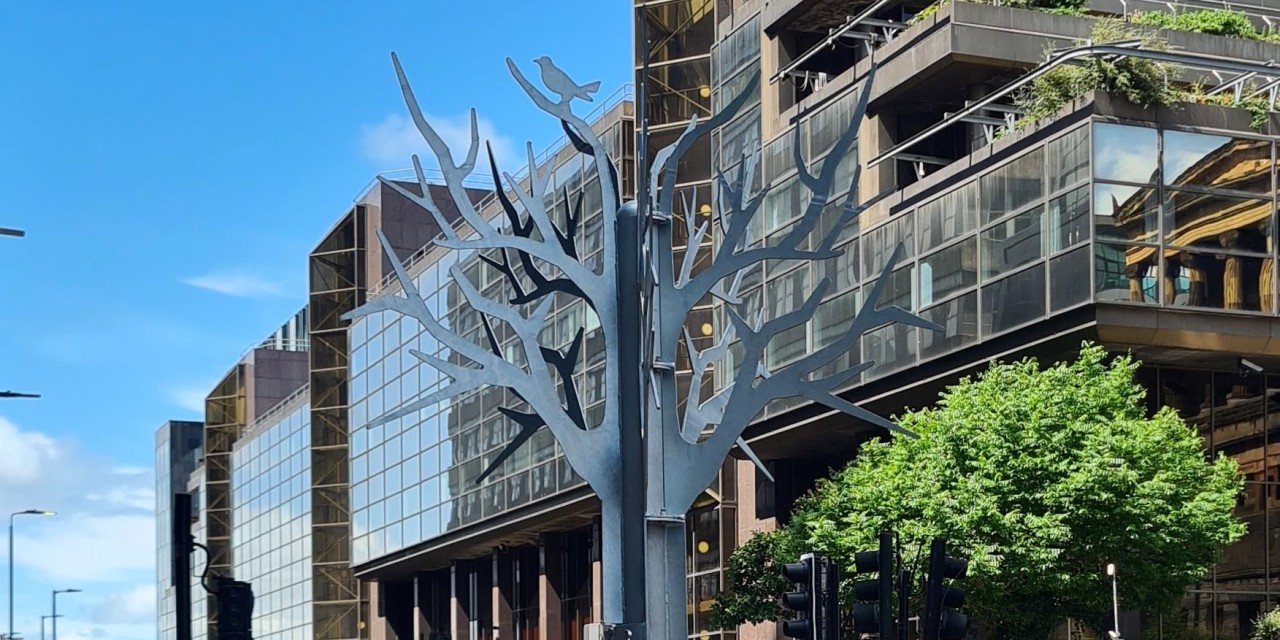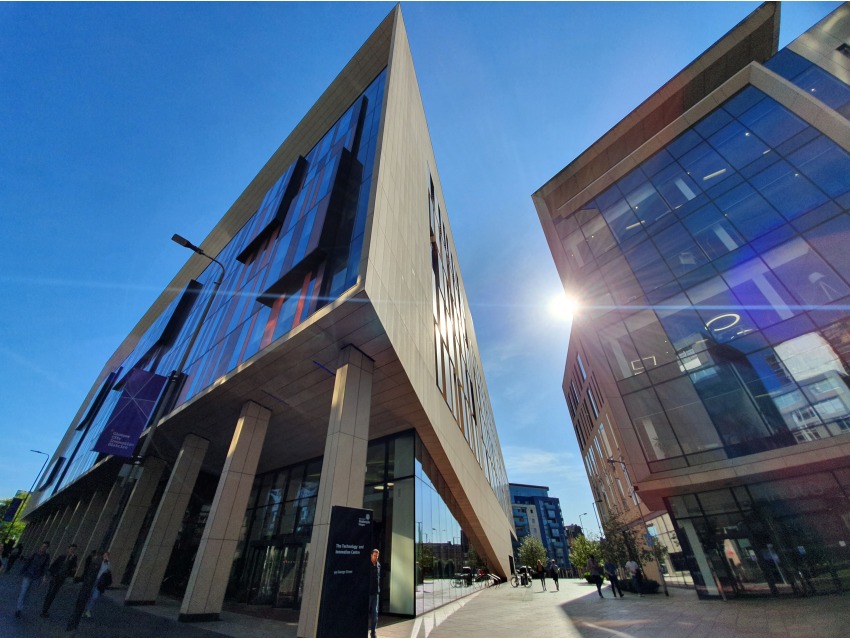‘Tree That Never Grows’ Planted on Bothwell Street
17th Jul 2023

A new Glasgow-inspired art installation celebrating the city’s heritage has been ‘planted’ in front of 177 Bothwell Street by HFD, the property company behind the recently completed office development.
The metal, wood and stone tree incorporates recycled material from the construction of 177 Bothwell Street, together with recycled stone ballast from HFD and Forma’s refurbishment of the adjacent Aurora building.
The sculpture, designed by HFD with technical design and engineering by Woolgar Hunter – the structural engineers involved with both buildings – incorporates items from Glasgow’s city crest, including a bird, a bell, and a fish, as well as seating for passers-by. Each item is a reference to legends related to the city’s patron St Mungo, who founded the monastery that is now Glasgow Cathedral.
Inscribed on the seating is a poem that paraphrases stories about each item and their significance to St Mungo’s life: “Here is the bird that never flew. Here is the tree that never grew. Here is the bell that never rang. Here is the fish that never swam.”
177 Bothwell Street was recently completed and is Glasgow’s largest single office building, comprising of 315,000 sq. ft. of Grade A office space. Its occupiers include Virgin Money, BNP Paribas, AECOM, CBRE, Evelyn, Partners, Transport Scotland, and HFD, while an independent economic impact assessment concluded the development will generate £2.8 billon for the local and wider Scottish economy over 25 years.
Stephen Lewis, MD of HFD Property Group, said:
This piece of public art is another way for us to celebrate Glasgow and do something a bit different not only for 177 Bothwell Street’s new occupiers, but anyone in the city who happens to by passing by. True to the ethos behind the building, we have incorporated recycled materials together with it being fabricated locally by BHC who’s facility is powered by wind energy.
It is a small but important gesture to the city and its people. We hope anyone who stops to have a seat looks a bit further into Glasgow’s history and finds out more about the amazing stories of the city’s patron saint which are immortalised on the crest we have all seen, but perhaps never looked at in great detail.
The legend behind each item
Each item on the tree has a story behind it. The bird that never flew is a reference to a robin which St Mungo’s master tamed. The legend says that the robin was accidentally killed by some of his disciples, who then blamed St Mungo. He took the bird’s body in his hands and prayed, restoring it to life before it flew back to its master.
In the second story, St Mungo was asked to keep a fire going in the monastery refectory. However, he fell asleep and other boys put the fire out. When he found the fire extinguished, St Mungo broke off some branches from a tree and prayed over them until they burst into flames, restoring his fire.
The bell, meanwhile, is thought to have been given to St Mungo by the then Pope. Over the years, the bell had become a notable institution in Glasgow and, in 1450, the city’s first Provost left an endowment to have the bell tolled throughout the city to call for its citizens to to pray for his soul.
Finally, the fish that never swam relates to a story involving Hydderch Hael, King of Cadzow; his wife Queen Languoreth; and a knight, who may have been her lover. The king gave his wife a ring and then arranged for it to be stolen, so he could catch her out. He threatened her with death if she could not show it to him, so she appealed to the knight, who confessed to St Mungo. St Mungo sent one of his monks to catch a fish and then duly extracted the ring from its mouth.


